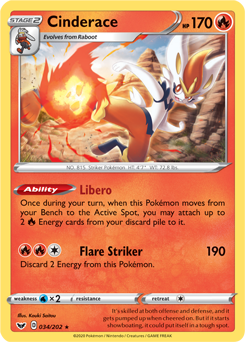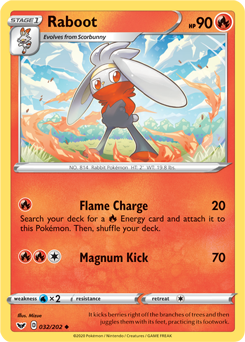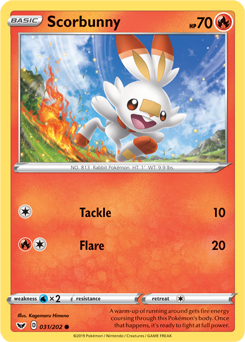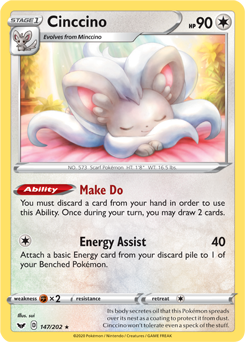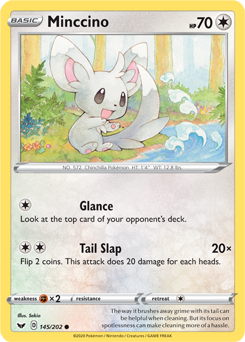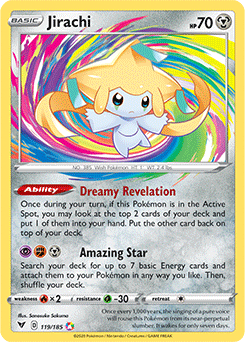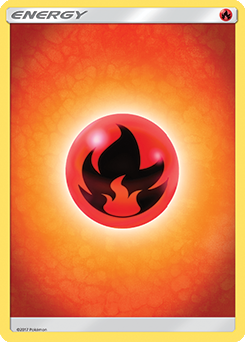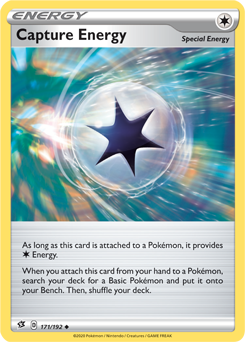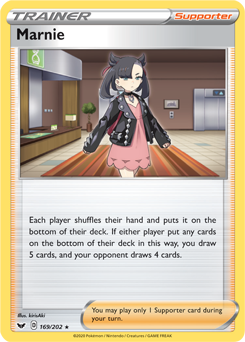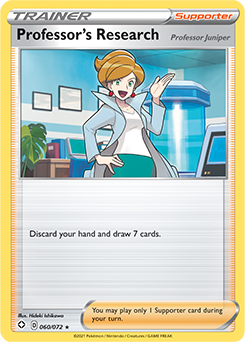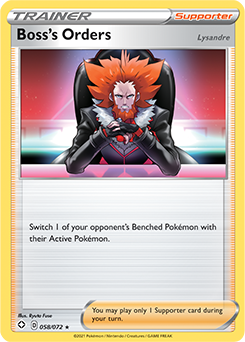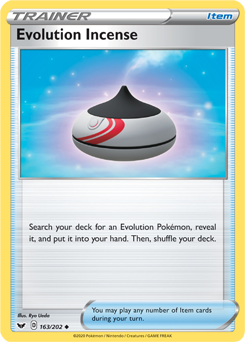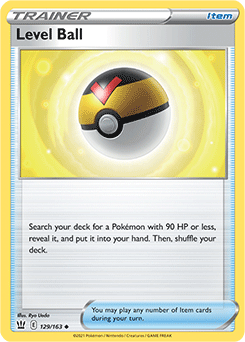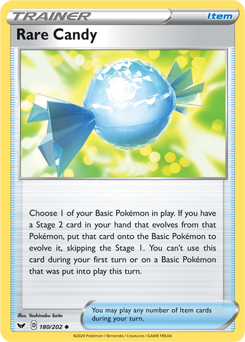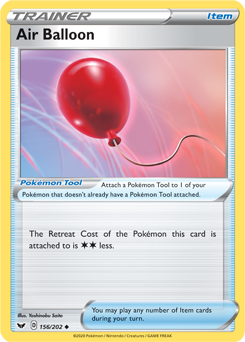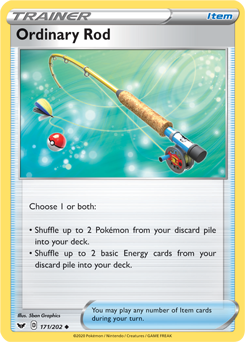Finding that one card in your collection that’s powerful, balanced, and strategic is thrilling—your mind races with ways to unlock its potential as the centerpiece of your next deck. But that’s the key: even “hero” cards can’t do it alone, no matter how versatile they are.
In this Top Deck Academy episode, Andrew Mahone looks at a deck featuring Cinderace from the Sword & Shield expansion. The card really has it all: good HP, a useful Ability, and a strong attack. Now it’s about figuring out how to fill out the rest of the 60-card deck.
Remember that a new episode of Top Deck Academy comes out every week, and you can watch the entire series here on Pokemon.com or on YouTube.com/Pokemon and Twitch.tv/Pokemon.
Notice: If you click on the YouTube video above, you will leave Pokemon.com. The Pokémon Company International is not responsible for the content of any linked website that is not operated by The Pokémon Company International. Please note that these websites' privacy policies and security practices may differ from The Pokémon Company International's standards.
What’s up, everybody? I’m Andrew Mahone, trading card game player and host of Tricky Gym. On today’s episode of Top Deck Academy, I’m going to show you how to build your own deck using Cinderace.

If you’re brand-new to the Pokémon Trading Card Game or just learning how to play, I highly recommend hopping over to tcg.pokemon.com/how-to-play to start your journey with our how-to-play videos.
Building your own deck can be broken down into five steps.
Step 1: choose the hero of your deck. Step 2: support Pokémon. Step 3: draw cards. Step 4: utility cards. Step 5: Energy.
The “hero” of the deck, or the main attacker, is the Pokémon that’s going to form the main strategy of the deck. Once you choose the hero, all the other cards in your deck will help support it. Choosing the hero of the deck can be as easy as looking through your collection and finding a card that you like the best. Or it can be a Pokémon with a cool Ability, or an awesome attack that you’d really like to use in battle.
For this deck, we’re going to choose Cinderace from the Pokémon TCG: Sword & Shield expansion. Cinderace is a Stage 2 Pokémon with a powerful attack and a useful Ability. Cinderace’s attack, Flare Striker, does 190 damage for two Fire and one Colorless Energy. The drawback, though, is that you have to discard two Energy from Cinderace in order to use the attack. Cinderace’s Ability, Libero, is great for accelerating Energy into play. Libero allows you to attach up to two Fire Energy from the discard pile to your Cinderace when it moves from the Bench to the Active Spot. Since Flare Striker discards two Energy, and Libero accelerates two Energy, this means that Cinderace can attack turn after turn if it keeps moving from the Bench to the Active Spot.

Cinderace is a Stage 2 Pokémon, which means it needs to evolve in order to come into play. We’ll have to play plenty of Scorbunny and Raboot in order to make sure that we can evolve into our main attacker.
In this list, we’ll play four copies of Scorbunny because you want to get it into play on the first turn of the game. We’ll also play three copies of Raboot and four copies of Cinderace. You don’t actually need to play as many copies of Raboot as you do Cinderace because of Rare Candy, which we’ll talk about later on.
Some Pokémon are meant for attacking, while others help your deck to work better. Setting up multiple Cinderace and switching between them is a lot of work, especially while fielding attacks from the opponent. Support Pokémon help you to draw the cards you need in order to form a successful in-game strategy.

In this deck, we rely on Cinccino and Amazing Jirachi to back up our Cinderace. These Pokémon are good choices for the deck because they’re only worth a single Prize card and help Cinderace to trade favorably with Pokémon that give up more Prize cards.
Cinccino is useful because of its Make Do Ability. Make Do lets you discard a card from your hand in order to draw two cards from your deck. Each Cinccino you have in play can use its own Make Do Ability, so you could potentially draw up to eight extra cards each turn! This is useful not only for drawing cards, but also for getting Fire Energy into the discard pile for Cinderace’s Libero to accelerate into play later on.
Amazing Jirachi works well in this deck because it’s a Basic Pokémon and easy to get into play. Its Dreamy Revelation Ability lets you look at the top 2 cards of your deck, put one into your hand, and then put the other one back on top of your deck. It’s a great pivot card for Cinderace because when a Cinderace gets Knocked Out, you can promote Jirachi and draw an extra card before attacking again with Cinderace.
Drawing cards is one of the best things you can do in the Pokémon TCG. We just talked about Pokémon that help you draw cards, but how do you draw cards to get those Pokémon into play? Supporters are some of the most useful cards in any Pokémon TCG deck, as they allow you to draw cards without relying on Pokémon in play. Their limitation, though, is that you can only play one of them each turn.

The most powerful draw card in the Pokémon TCG is definitely Professor’s Research. It’s played in almost every deck! Professor’s Research allows you to discard your hand and draw seven new cards.
You don’t always want to discard your hand, though, which is where Marnie comes in. Marnie allows you to conserve resources by shuffling your hand and placing it on the bottom of your deck before allowing you to draw five new cards off the top.
Drawing cards is great, but so is searching out specific cards. Most search cards, unlike draw cards, come in the form of Items. You can play as many Items as you like during your turn, and they have useful effects on the game, like allowing you to search a Pokémon out of your deck, or putting a Pokémon from your discard pile back into the deck.

Level Ball, from the Sword & Shield—Battle Styles expansion, is fantastic for getting Pokémon into play. Level Ball allows you to search your deck for a Pokémon with 90 Hit Points or less and put it into your hand. Scorbunny, Raboot, Minccino, Cinccino, and Amazing Jirachi all have 90 Hit Points or less, allowing them to be searched out with Level Ball.
The only Pokémon in this deck we can’t get with Level Ball is Cinderace. To help find Cinderace, this deck also plays four copies of Evolution Incense, which allows you to search your deck for an Evolution Pokémon and put it into your hand. With a Level Ball and an Evolution Incense in hand, you can get a Minccino on one turn, then get a Cinccino on the following turn to start drawing cards with Make Do. With strategies like this, you can turn search cards into draw cards, improving the overall consistency of your deck and helping you to win more games!
Not all Item cards are search cards, though. Some Items, like Rare Candy, have powerful in-game effects. Rare Candy allows you to evolve Scorbunny directly into Cinderace. This means that you can skip Raboot altogether if you have a Scorbunny in play for a turn and you have a Cinderace and a Rare Candy in hand. Rare Candy is so good that almost all decks that play Stage 2 Pokémon also play Rare Candy. It’s also why we play four copies of Cinderace, but only three copies of Raboot.
During the game, your Pokémon will eventually get Knocked Out, which means that they go to the discard pile. Getting your Pokémon back from the discard pile and into play can help you to continue attacking and win a game! Ordinary Rod allows you to shuffle up to two Pokémon and up to two basic Energy from your discard pile back into the deck. This is great for putting Cinderace back into the deck if it gets Knocked Out or discarded with the effect of Professor’s Research.
The last item in the deck is Air Balloon. Air Balloon is a Pokémon Tool card, which means that to put it into play, you attach it to a Pokémon that doesn’t already have a Tool attached. Air Balloon is useful because it reduces the Retreat Cost of the Pokémon it is attached to by two Energy. Cinderace, Cinccino, and Jirachi can all retreat for free if they have an Air Balloon attached, assisting with the overall function of the deck. Switch cards are important for any deck because they allow you to easily place the attacker that you want in the Active Spot without having to pay a Retreat Cost.
The last step in building a deck is the Energy. Different decks run different amounts of Energy depending on their strategy, but as a general rule, most decks run between 10 and 15 Energy cards. Cinderace’s attack, Flare Striker, needs plenty of Fire Energy to get powered up. And Cinderace’s Ability, Libero, accelerates basic Fire Energy from the discard pile. For that reason, we run 10 basic Fire Energy in this deck.

Cinderace’s Flare Striker attack also needs a single Colorless Energy. Colorless Energy requirements, like those on some attacks and all Retreat Costs, can be paid with any type of Energy. Because Cinderace has a Colorless requirement in its attack cost, it allows us to effectively use Capture Energy. Capture Energy provides one Colorless Energy when attached to a Pokémon, with the bonus effect of allowing you to search your deck for a Basic Pokémon and put it onto your Bench when you play the Capture Energy from your hand. Capture Energy is awesome for searching out multiple Scorbunny or Minccino, or even for getting an Amazing Jirachi so that you can start drawing cards with Dreamy Revelation.
Thanks for joining me on this episode of Top Deck Academy! I hope you learned something new about how to build your own Pokémon Trading Card Game deck! Give this deck a try, and let me know what you think of battling with Cinderace in the comments below [on YouTube.com only].
It’s extra credit time! Here’s the full deck list for the Cinderace deck:

